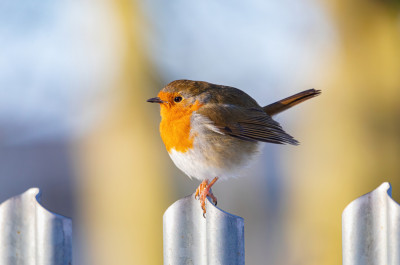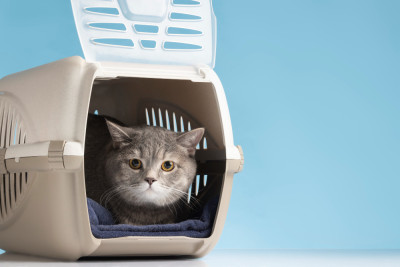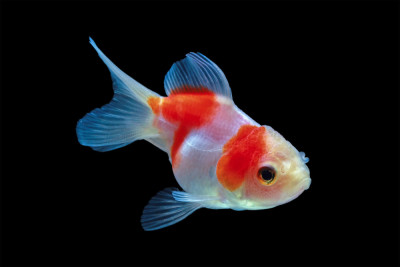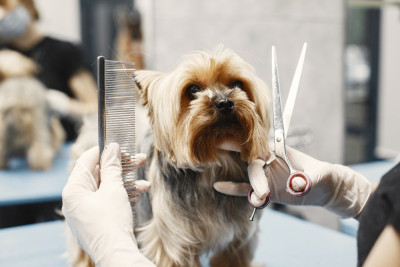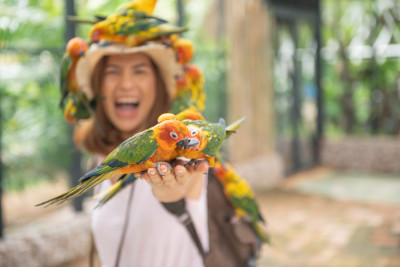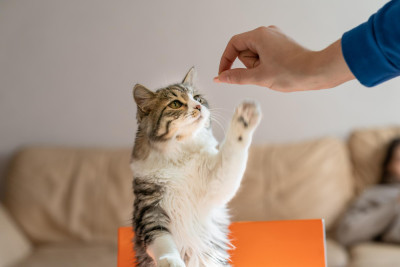1. Bird-Proof the Environment
Before letting your bird take flight indoors, it's vital to bird-proof the space:
-
Windows: Ensure that all windows and glass doors are closed or covered to prevent collisions. Birds may not recognize the glass as a barrier and can injure themselves.
-
Mirrors: Cover or remove mirrors in the room where your bird will fly. Birds can become disoriented by their own reflection and fly into the mirror.
-
Ceiling Fans: Turn off or secure ceiling fans to prevent accidents. Flying into a spinning fan can cause severe injuries.
-
Other Pets: Ensure that other pets, such as cats and dogs, are safely confined in another area. Their presence can cause stress and anxiety in your bird.
-
Houseplants: Remove or secure any toxic houseplants. Some plants can be harmful if ingested by your bird.
2. Choose a Safe Space
Select a room with plenty of space for your bird to fly without obstructions. The living room or a dedicated bird room are often suitable choices. Remove any potential hazards, such as sharp objects or open containers of liquids.
3. Recall Training
Before allowing your bird to fly freely indoors, work on recall training. Ensure that your bird responds to a recall cue (e.g., a specific word or whistle) and can return to you on command. This training is crucial for regaining control if your bird flies out of reach or into an unsafe area.
4. Supervision is Key
Never leave your bird unattended while flying indoors. Keep a close eye on your bird's movements, and be prepared to intervene if necessary. Birds can get into trouble quickly, so constant supervision is essential.
5. Flight Time
Start with short, controlled flight sessions to assess your bird's comfort and skills. Gradually increase the duration and height of the flights as your bird becomes more confident.
6. Provide Landing Spots
Ensure there are safe landing spots for your bird, such as perches or play gyms, at various heights within the room. This allows your bird to rest and take breaks during flight.
7. Maintain a Healthy Diet
A well-fed bird is more likely to return to you when called. Ensure your bird has access to fresh food and water before and after flight sessions.
8. Watch for Signs of Fatigue
Pay attention to signs of fatigue, such as heavy breathing or resting on the floor. Birds can tire quickly, so it's essential to end the flight session if your bird shows signs of exhaustion.
9. Regular Wing Clipping
If you're concerned about your bird's safety during indoor flights, you can opt for regular wing clipping. This procedure, performed by a veterinarian or an experienced groomer, trims the feathers to limit your bird's ability to fly. It can be an effective safety measure, but it should be done with care and consideration for your bird's well-being.
10. Build Trust and Bonding
Flying with your bird indoors is an excellent opportunity to build trust and strengthen your bond. Use positive reinforcement and rewards to encourage your bird to return to you during flight.
Conclusion
Allowing your bird to fly indoors can be a rewarding and enriching experience for both you and your feathered friend. However, it comes with responsibilities, such as ensuring a safe environment, proper training, and constant supervision. By following these essential tips and taking the necessary precautions, you can create a safe and enjoyable indoor flying experience for your beloved bird.

